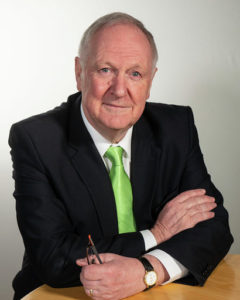Quick search
CTRL+K
Quick search
CTRL+K


Since 2010, the Global Law Experts annual awards have been celebrating excellence, innovation and performance across the legal communities from around the world.
posted 2 years ago
Two cases are the subject of today’s discussions.
The first is a plaintiff presented with complaint that he had developed an infection on the back of the finger, which proved to be due to a foreign body under the skin.
Further investigation revealed that 10 years previously the plaintiff, then aged 14, had sustained a cut to the back of the hand, which severed a tendon and this had been repaired. The foreign body proved to be suture material making its way to the surface.
Repair of a tendon requires the insertion of sutures that necessarily attach around the tendon with, usually, another stitch and a knot inside the tendon where the two ends were pulled together.
The blood supply to a tendon is not particularly good, and absorbable sutures may not dissolve fully. Over time, the suture will come to the surface as it is rejected by the body. This is a normal process and is not an indication of substandard care.
The second case involves an obese patient who underwent laparoscopic (keyhole) surgery to repair a hernia. At the end of the procedure, before the ports into the abdomen were closed, the scrub nurse indicated that a fine needle was missing from the count. A extensive search was made for the needle in the abdomen, including an on table X-ray, but it could not be found among the fat inside the abdomen. Accordingly, this was documented and the operation was completed.
The following day, the plaintiff was told what had happened and underwent CT scanning, which defined the position of the needle. That afternoon, under general anaesthetic, the laparoscopic ports were re-opened and the instruments inserted again without any further incision. The needle was found and removed.
On this occasion, the surgeon followed protocol, including on-table X-rays, when they recognised during the count that a needle was missing.
The following day, the plaintiff was informed and the protocol again followed by undertaking a CT scan, following which, under general anaesthetic through the original incisions, the needle was located and removed.
Such an event would be regarded as an unfortunate complication. It was recognised at the time and properly dealt with as per protocols. There was therefore no evidence of a breach of the duty of care by the staff involved and, therefore, although the plaintiff was obviously upset because they had two general anaesthetics within 24 hours, an action in negligence would be unlikely to succeed.
In the above cases, it is understandable why the plaintiff should feel aggrieved because of something “left behind”. However, in the first case, this was material normally left in-situ, and in the second, the material was lost in a fatty abdominal cavity but this was immediately recognised and the appropriate protocols followed. In neither case, therefore, was an action in negligence likely to succeed.
MDU figures for 2020 show that less than one in six actions in medical negligence actually succeed, with the vast majority failing on the grounds of causation. It must be remembered that subsequence is not the same as consequence.
Initial screening is, therefore, essential to manage client expectations at an early stage. This avoids unnecessary effort and costs for all concerned. Too many cases are taken to Court with no chance of success. This is stressful for both the client and their legal adviser, and indeed for the medical personnel involved.
For fast and effective screening of all potential medical negligence cases contact Peyton Medico Legal Services now on +44 (0)28 87724177 or email [email protected]
Author


There are no results matching your search.
Resetposted 2 days ago
posted 3 days ago
posted 3 days ago
posted 4 days ago
posted 4 days ago
posted 4 days ago
posted 4 days ago
posted 4 days ago
There are no results matching your search.
ResetFind the right Legal Expert for your business
Sign up for the latest legal briefings and news within Global Law Experts’ community, as well as a whole host of features, editorial and conference updates direct to your email inbox.
Naturally you can unsubscribe at any time.
Global Law Experts is dedicated to providing exceptional legal services to clients around the world. With a vast network of highly skilled and experienced lawyers, we are committed to delivering innovative and tailored solutions to meet the diverse needs of our clients in various jurisdictions.